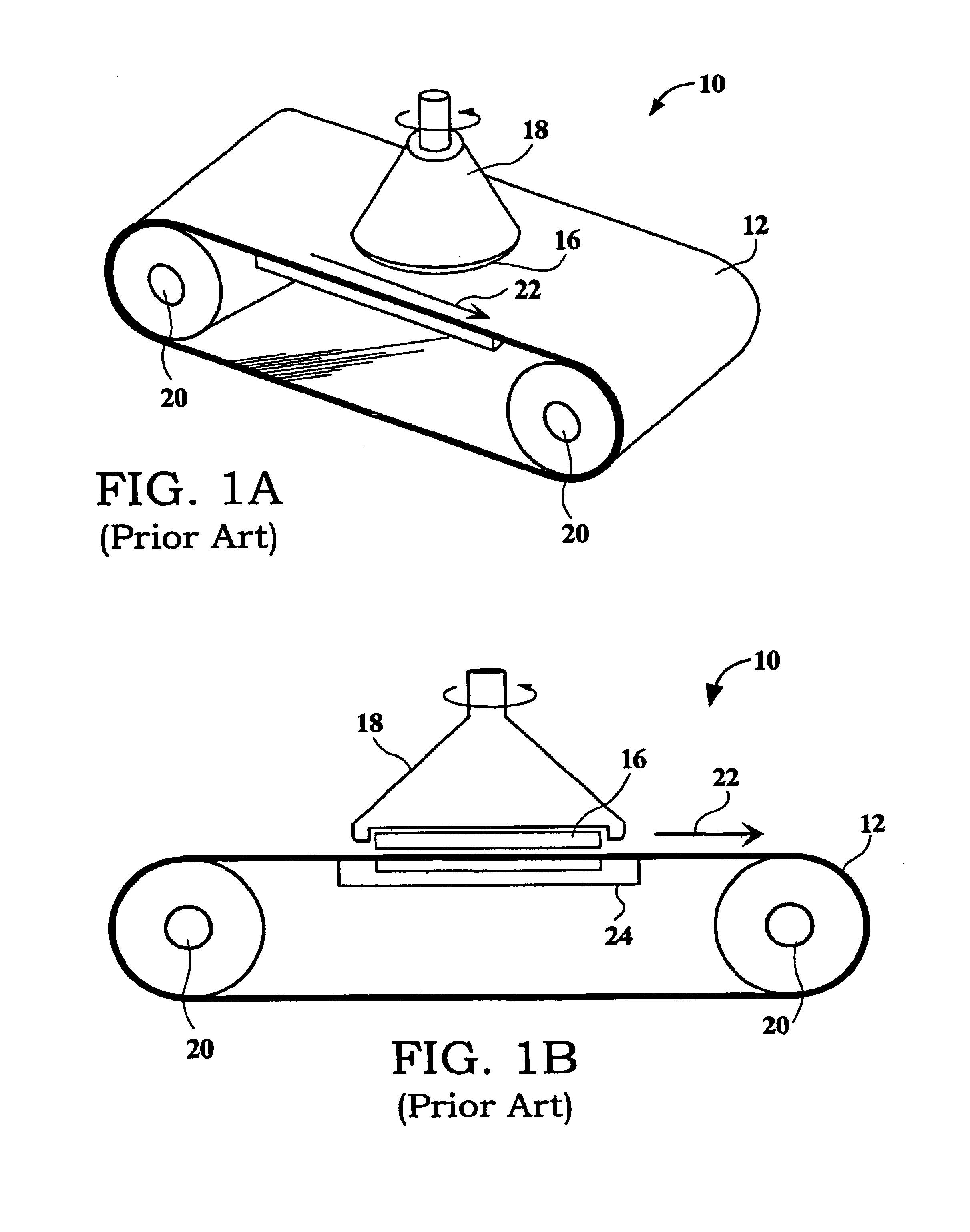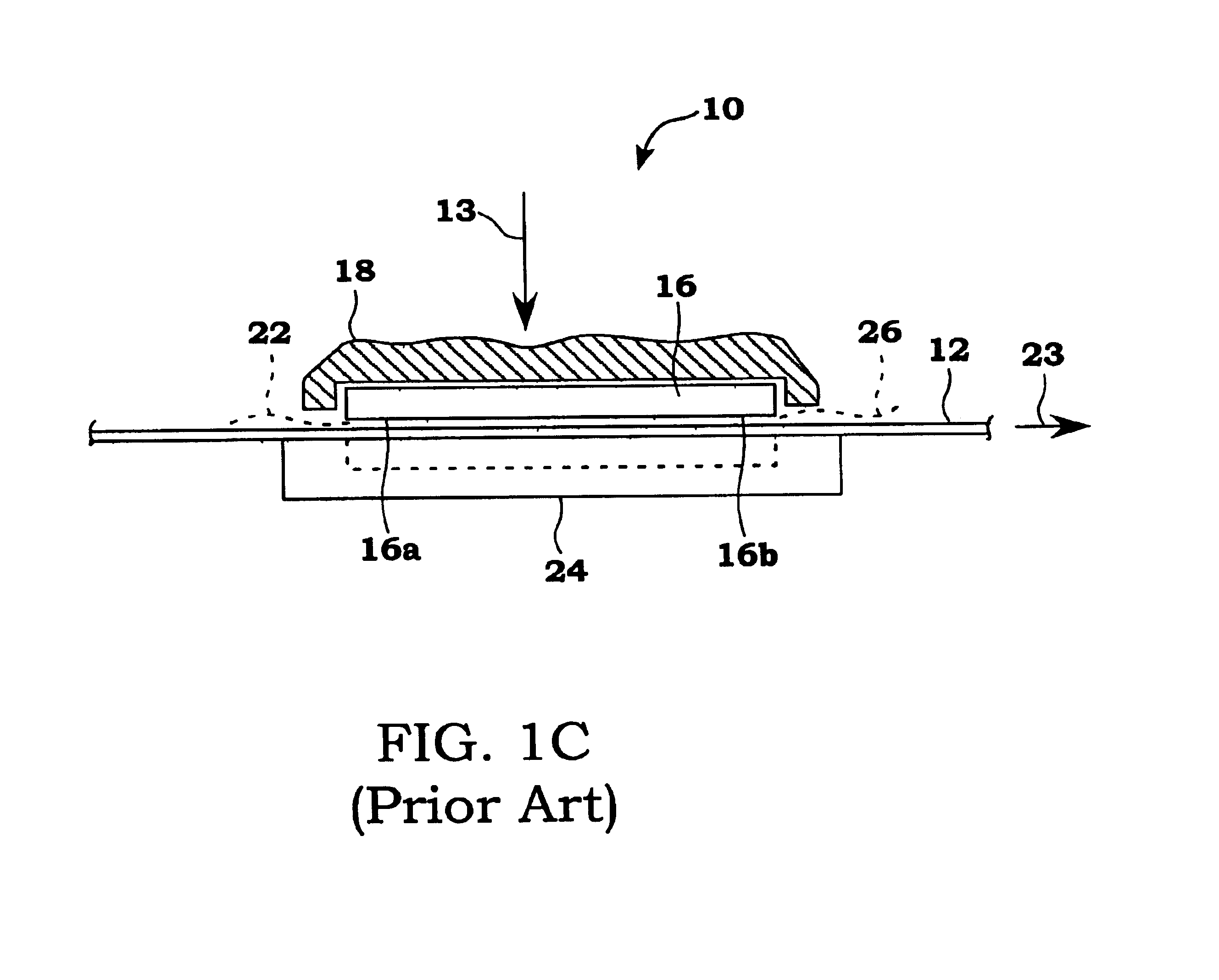300 mm platen and belt configuration
a belt configuration and platen technology, applied in the field of 300 mm, can solve the problems of reducing the yield of wafers, reducing the manufacturing efficiency of further metallization layers, and reducing so as to reduce fluid consumption, improve the non-uniformity of wafers, and reduce the edge effect of wafers.
- Summary
- Abstract
- Description
- Claims
- Application Information
AI Technical Summary
Benefits of technology
Problems solved by technology
Method used
Image
Examples
Embodiment Construction
[0028]An invention is disclosed for a 300 millimeter (mm) CMP platen and Belt configuration that greatly reduces edge effect. Broadly speaking, embodiments of the present invention increase belt tension during CMP processing. As a result, platen height and air bearing adjustments can have a greater affect on reducing fast removal rates at the edge of the wafer. In this manner, the embodiments of the present invention improve within wafer nonuniformity. In the following description, numerous specific details are set forth in order to provide a thorough understanding of the present invention. It will be apparent, however, to one skilled in the art that the present invention may be practiced without some or all of these specific details. In other instances, well known process steps have not been described in detail in order not to unnecessarily obscure the present invention.
[0029]FIG. 2 shows a side view of a linear wafer polishing apparatus 200 optimized for reduced edge effect, in ac...
PUM
| Property | Measurement | Unit |
|---|---|---|
| height | aaaaa | aaaaa |
| air pressure | aaaaa | aaaaa |
| air pressure | aaaaa | aaaaa |
Abstract
Description
Claims
Application Information
 Login to View More
Login to View More - R&D
- Intellectual Property
- Life Sciences
- Materials
- Tech Scout
- Unparalleled Data Quality
- Higher Quality Content
- 60% Fewer Hallucinations
Browse by: Latest US Patents, China's latest patents, Technical Efficacy Thesaurus, Application Domain, Technology Topic, Popular Technical Reports.
© 2025 PatSnap. All rights reserved.Legal|Privacy policy|Modern Slavery Act Transparency Statement|Sitemap|About US| Contact US: help@patsnap.com



